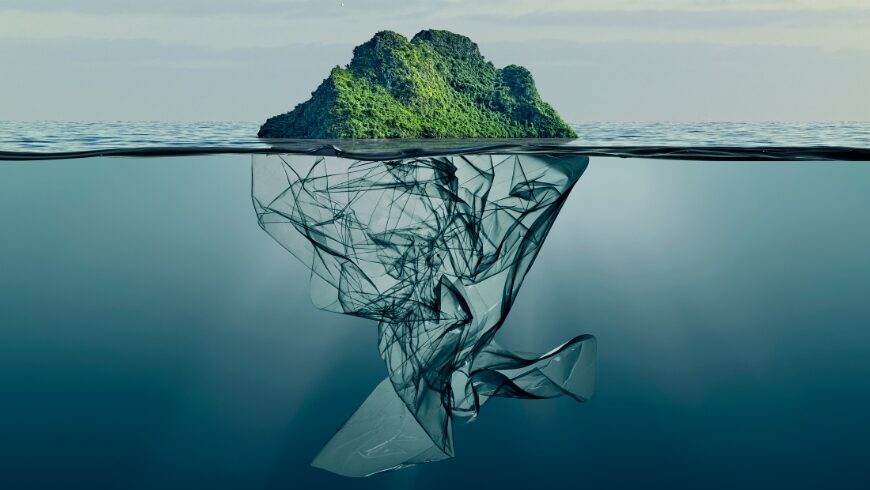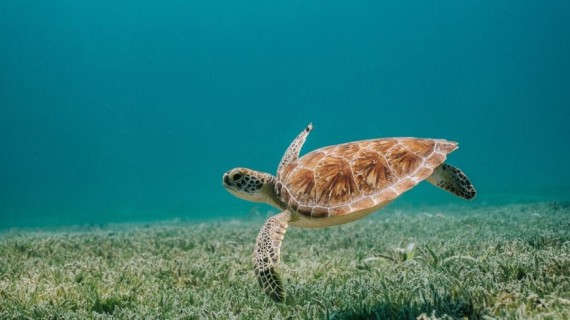The Mediterranean Sea is located between three continents: Africa, Asia, and Europe. It receives this name because it comes from the Latin ” medi terraneum ” which means ” sea in the middle of the land “. That is, it is surrounded by lands of high extension. Through the Strait of Gibraltar, the Mediterranean Sea connects with the Atlantic Ocean and is characterized by its great biodiversity: it is home to between 4% and 18% of the world’s marine species and has a very high value both ecologically and economically.
Why are water resources so important?
The presence of seas and oceans is fundamental for life on Earth, as they provide most of the oxygen we breathe. They are also a source of food, life and are fundamental in regulating the climate.
From an economic point of view, activities such as fishing, tourism, and maritime transport are developed on the basis of water resources and allow the development of societies.
The Mediterranean Sea needs help

Despite the economic and ecological importance of the Mediterranean Sea, currently and for many years it has faced major problems of anthropogenic origin, that are caused by human activities.
Some of these activities are:
- Overfishing
- Destructive fishing techniques
- Pollution
- Overpopulation on the coasts
- Mass tourism
- Poor (or not) waste treatment
Alarming figures
According to WWF Spain
“The Mediterranean accumulates only 1% of the world’s water and 7% of global microplastics”
Europe dumps 500,000 tons of microplastics into the sea and 130,000 tons of microplastics
Europe (the 28 members of the EU + Norway and Switzerland) is the third largest producer of plastics in the world after China and North America
Most of the plastics used in the countries are for packaging
In the Mediterranean Sea, more than 134 species (fish, sea turtles, mammals, and birds) are threatened by the ingestion of plastics.

Consequences of Plastics in the Sea
Plastic waste pollutes the coasts and directly affects marine fauna.
According to the European Parliament Research Service , the main people affected by their presence at sea are:
- Marine life
- Economy
- Human health
- Climate
The case of Sicily Island

Located in the South of Italy, Sicily is not only the largest island in the Mediterranean Sea, also has a strategic geopolitical location, is rich in culture and history, possesses valuable natural resources, indescribable landscapes, and unique gastronomy.
Different cultures have left their traces on this island throughout time and this can be seen in its diverse architectural styles, markets, temples, handicrafts, gastronomy, and creative environment in general.
That is why thousands of tourists visit the island every year and are attracted by this great cultural diversity accompanied by unique landscapes.

But unfortunately, it suffers from a serious problem that threatens its riches and its potential: the amount of garbage present in its terrestrial and maritime space, mainly the plastics that surround its coasts and are visible throughout the Island.
Plastic pollution affects the most remote places in the world and harms both natural environments and people’s health.
In the places most visited by tourists, as in the least frequented of Sicily, cigarette butts and plastics are concentrated in large quantities.
Both the beaches, the mountains, and the streets of the cities are affected by the problem of plastic. The beaches look like garbage dumps and all that garbage ends up deposited in the sea.
There are those who hold tourists responsible, but there is also a great responsibility on the part of various social actors such as municipalities, companies, and part of the local population in environmental contamination and the alarming amount of garbage that the island contains.
During the months of high season, tourist cities multiply their in large quantities their population, therefore it is necessary a commitment from them, as well as from institutions, companies and citizens to regulate the use of plastics.
Look for alternatives to plastic products, control the separation of waste, prohibition of single-use plastics, correct recycling and reuse of plastics, and the daily cleaning of beaches and spaces in general.

The need for environmental education, awareness, and commitment is reflected in the large amount of plastics and garbage in general that are visible in the most beautiful landscapes of Sicily and countless natural areas around the world. This is generating irreversible consequences.
To achieve the true tourist and economic growth of these spaces, it is necessary to achieve sustainable development and in harmony with the environment, otherwise there will be no future or possible development.
Cover photo Via Canva Pro




